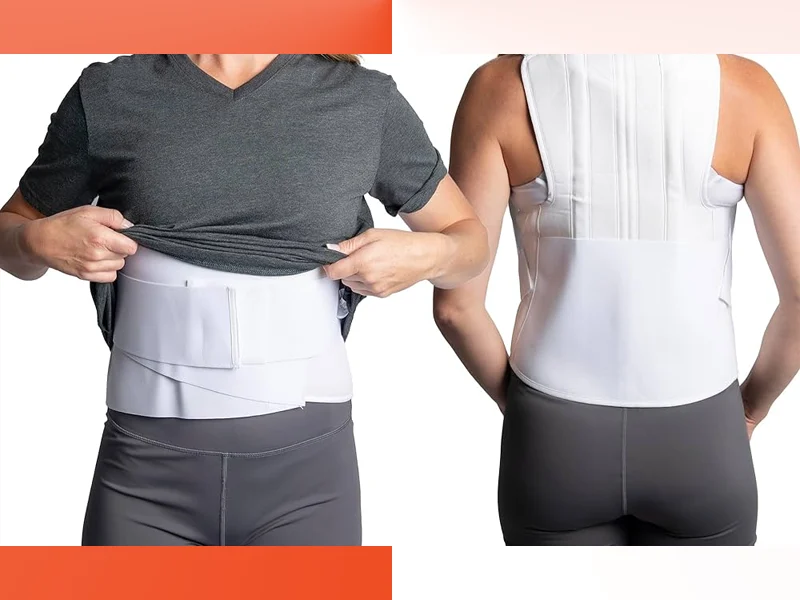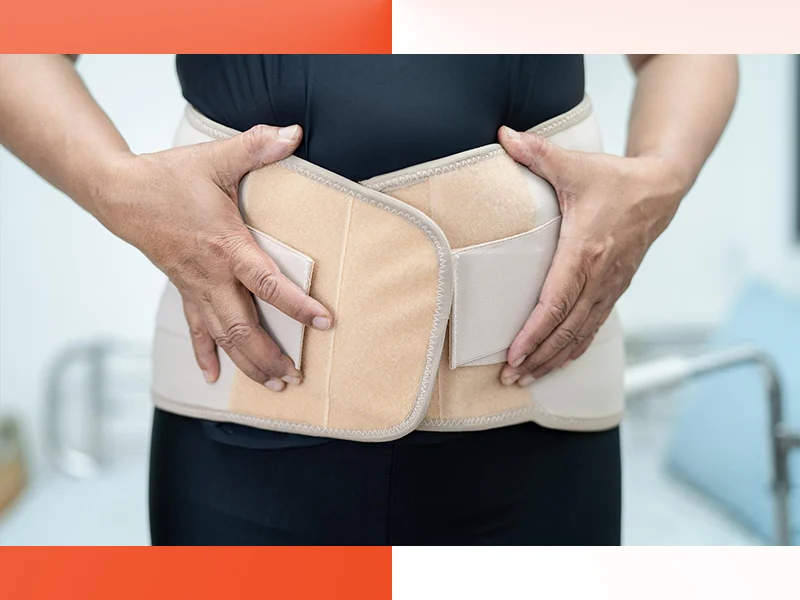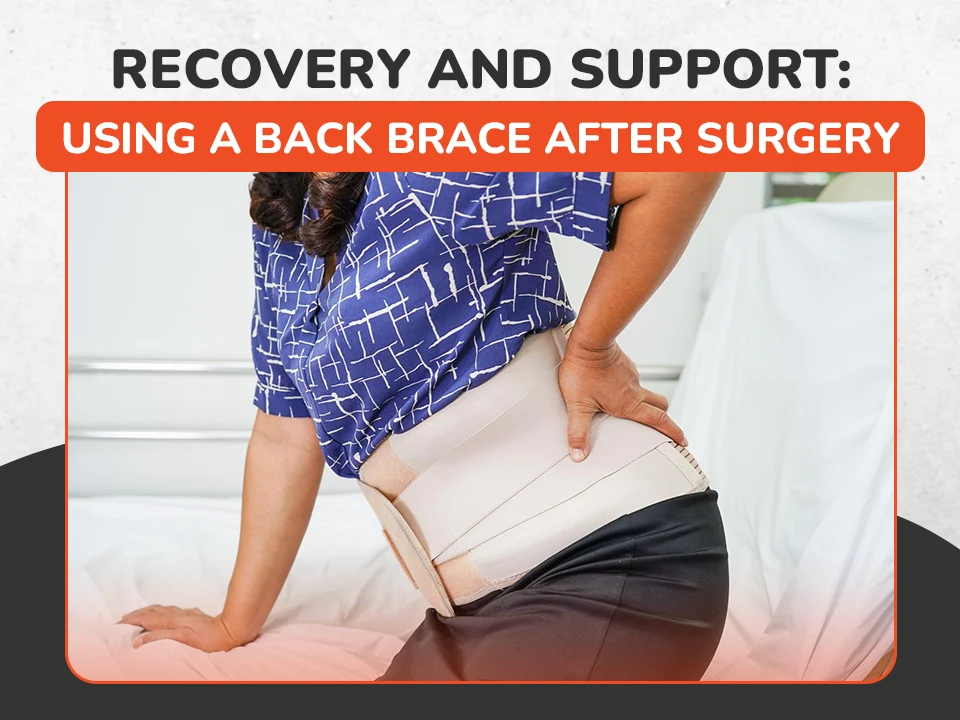Undergoing back surgery can be a pivotal event in one’s life, often aimed at relieving chronic pain and improving overall spinal function. Whether it’s due to degenerative diseases, injury, or congenital conditions, the decision to undergo spinal surgery is not made lightly and comes with high expectations for improved quality of life. However, the journey to recovery post-surgery is as crucial as the surgery itself. It involves carefully managing the healing process to ensure the best possible outcomes. In this context, using a back brace post-surgery is vital to the recovery toolkit. A back brace can be essential in stabilizing the spine, reducing pain, and preventing movements that might jeopardize the surgical site. This educational blog will explore the benefits of using a back brace after spinal surgery. It provides detailed guidance on using these supportive devices effectively. It offers practical tips for integrating a back brace into your daily recovery regimen, ensuring a smooth and effective healing process.
Through comprehensive insights and expert advice, this blog aims to equip patients and caregivers with the knowledge to make informed decisions about incorporating a back brace into their post-operative care plan. By understanding how a back brace works, its key benefits, and the best practices for its use, patients can significantly enhance their recovery experience and move towards a faster and safer return to normal activities.
Understanding Back Braces
A back brace is a meticulously designed device intended to restrict the movement of the spine in specific situations, such as following surgery, during recovery from a fracture, or in managing chronic spinal conditions. These devices play a crucial role in the post-operative period and beyond, facilitating a safe and gradual return to daily activities.
Function and Design
Back braces come in various designs, each tailored to target specific areas of the spine or to address particular medical needs. They range from soft, elastic braces that provide mild support and compression to rigid braces that immobilize the spine significantly. The choice of brace depends on the level of support the surgeon or treating physician deems necessary based on the type of surgery performed and the patient’s recovery progress.
Stabilization and Support
The primary function of a back brace is to stabilize and support the spine. After surgery, particularly surgeries involving fusion or significant restructuring of the spine, it is critical to keep the spine properly aligned and limit movements that could disrupt the healing process. A back brace effectively holds the spine in the correct position, which is essential for the fusion of bones or the healing of tissues.
Maintaining Proper Posture
Back braces are instrumental in helping patients maintain proper posture during their recovery. Good posture not only supports surgical recovery but also helps improve the overall functionality of the spine. Back braces reduce stress on the spinal column and adjacent muscles by keeping the spine aligned, preventing complications, and promoting a smoother recovery.
Pain Reduction
One of the immediate benefits of wearing a back brace post-surgery is reducing pain. Back braces help minimize discomfort and enable patients to engage in physical therapy and rehabilitation with less pain by limiting unnecessary movements that could strain the healing spine. This support allows patients to increase their activity levels safely, which is vital for regaining strength and flexibility.
How Back Braces Aid Healing?
- Immobilization: In many spinal surgeries, immobilizing the affected area is crucial to ensure that the surgical corrections are not compromised. A back brace provides this immobilization, significantly reducing the risk of post-surgical complications such as pseudoarthrosis (nonunion of bones).
- Decreased Load on Spinal Joints: By redistributing weight and reducing the load on the spinal joints, back braces alleviate pressure on the spine, accelerating the healing process and lessening the risk of further injury.
- Enhanced Recovery Confidence: Wearing a back brace can give patients the confidence to move about more frequently and participate in physical therapy, knowing their spine is protected. Increased movement is essential for recovery but must be done within the safe limits provided by the brace.
Understanding the pivotal role of back braces in recovery from back surgery is crucial for anyone undergoing such medical procedures. These devices are not just support mechanisms but key tools in ensuring the success of spinal surgeries, providing both physical support and peace of mind as patients navigate the often challenging road to recovery.
Benefits of Using a Back Brace After Surgery

Using a back brace after spinal surgery is a practical approach that brings multiple benefits, addressing physical recovery needs and psychological comfort. Here’s an expanded look at these advantages:
Stabilization and Support
- Structural Alignment: Post-surgical recovery often requires that the spine remains aligned as the healing process takes place, especially if the surgery involves bone grafts or the insertion of hardware like screws and rods. A back brace maintains this alignment, minimizing the risk of misalignment as tissues heal.
- Support for Healing: By securing the spine, the back brace also supports the integration of surgical enhancements into the body, ensuring that the intended outcomes of the surgery are achieved without interference from external movements.
Pain Management
- Restriction of Pain-Inducing Movements: A back brace limits motions that can exacerbate post-surgical pain, such as twisting or bending the spine. The brace helps manage and significantly reduce pain levels during critical healing by controlling these movements.
- Enabling Gradual Rehabilitation: A back brace’s support allows patients to participate in rehabilitation activities with reduced pain, essential for adequate recovery.
Improved Posture
- Posture Correction: Continuous wear of a back brace helps maintain upright and correct posture by supporting the spine. Proper posture is crucial after spinal surgery as it distributes weight evenly and reduces pressure on sensitive areas, aiding healing.
- Long-Term Postural Benefits: Regularly wearing a back brace during recovery can also help develop good posture habits, which are beneficial even after full recovery.
Prevention of Re-Injury
- Protection from Strain: The brace acts as a physical barrier to movements that might strain or stress the surgical site, effectively preventing re-injury and complications that could delay recovery or lead to additional surgeries.
- Controlled Mobility: While mobility is crucial during recovery, it must be managed carefully; a back brace ensures that this mobility does not translate into unwanted stress on the spine.
Psychological Comfort
- Increased Security: Many patients feel more secure when wearing a back brace, providing a tangible sense of protection to the vulnerable surgical area. This can be incredibly reassuring during physical activities that might otherwise induce anxiety about the integrity of the surgical repair.
- Peace of Mind: Knowing that the spine is supported allows patients to relax more during their recovery, reducing stress and promoting a more positive outlook, aiding faster healing.
Choosing the Right Back Brace
Selecting the appropriate back brace is critical to your recovery process following surgery. It is vital to ensure that the brace you use is ideally suited to your specific needs, as determined by the type and location of your surgery.
Consult Your Surgeon
- Expert Guidance: Your surgeon is your primary resource when choosing a back brace. They can provide specific recommendations based on the surgical procedures you underwent and your individual recovery needs.
- Customized Support: Depending on the complexity and nature of your surgery, your surgeon might suggest a custom-made brace tailored to fit your body and provide targeted support where you need it most.
Fit and Comfort
- Proper Fitting: A well-fitted back brace should feel snug but not overly tight. It should support the spine without restricting circulation or causing discomfort.
- Trial and Adjustment: It’s often necessary to try on different sizes or styles to find the best balance of support and comfort. Adjustments may be needed to customize the fit, especially as your body changes during recovery.
Material and Quality
- Breathable Materials: Choose a brace made from materials that allow your skin to breathe. This prevents skin irritation and discomfort, especially during extended wear.
- Durable Construction: The quality of the materials and construction affects the brace’s comfort and effectiveness. High-quality materials ensure the brace maintains its shape and supportive qualities over time.
How to Wear a Back Brace Effectively?

Understanding and following best practices for using a back brace is important to maximizing its benefits.
Wearing Schedule
- Doctor’s Instructions: Adhere strictly to the wearing schedule prescribed by your doctor. Some patients may need to wear the brace almost continuously, while others might only need to wear it during certain activities or specific periods.
- Gradual Wearing: If recommended, gradually increase the time you wear the brace daily to allow your body to adjust to its support.
Putting It On
- Proper Technique: Learn the correct method for wearing and adjusting your back brace. This might initially require assistance from a healthcare professional or a family member.
- Regular Adjustments: Your brace might need adjustments to ensure optimal fit and effectiveness as you recover. Regular check-ins with your healthcare provider can help manage these adjustments.
Under Clothing
- Wearing Options: Most back braces are designed to be worn over clothing to avoid direct contact with the skin and ensure ease of use. However, some slimline braces can be worn under loose clothing for aesthetic or comfort reasons.
Integrating a Back Brace into Recovery
Integrating a back brace into your daily life after surgery involves several considerations to ensure effectiveness and comfort:
Personalization of Use
- Consult Your Surgeon: A back brace’s type, design, and use should be personalized based on your surgical procedure and recovery needs. Always begin by consulting with your surgeon.
- Appropriate Fit and Comfort: It’s crucial to have a back brace that fits well. An ill-fitting brace can cause discomfort, impede healing, or worsen your condition. Ensure that your back brace provides adequate support without being overly restrictive.
Material and Quality
- Breathable Fabrics: Choose a brace made from materials that allow adequate airflow, essential for keeping the skin dry and comfortable, particularly during extended use.
- Durable Construction: Construction quality affects the brace’s longevity and the consistency of support it can provide. High-quality materials and craftsmanship are crucial for ensuring the brace functions throughout recovery.
By understanding and appropriately utilizing the benefits of a back brace, patients can significantly enhance their recovery process after spinal surgery. A back brace supports physical healing and contributes to a safer, more comfortable recovery journey.
Read More: Navigating Back Braces: Support Solutions for Spinal Health
Caring for Your Back Brace
Maintaining your back brace is essential for ensuring it continues to provide the support you need throughout your recovery.
Cleaning Instructions
- Regular Cleaning: Follow the manufacturer’s instructions for cleaning your brace. Most braces can be gently hand-washed with mild detergent and air-dried.
- Avoid Harsh Chemicals: Do not use bleach or fabric softeners; these can degrade the materials and lessen the brace’s effectiveness.
Inspection for Wear
- Routine Checks: Regularly inspect your brace for signs of wear and tear, such as stretched-out straps, broken fasteners, or tears in the material.
- Replacement Needs: Contact your provider for a replacement if the brace shows signs of significant wear or no longer provides adequate support.
Conclusion
A back brace after surgery is a proven strategy for enhancing recovery by providing the necessary support and stability to the spine. You can significantly improve your recovery outcomes by carefully choosing the right back brace, wearing it according to medical advice, and maintaining it properly. Remember, a back brace is a tool designed to assist you in returning to everyday life as safely and quickly as possible. With the right approach and adherence to medical advice, you can optimize your healing process and confidently resume your daily activities.




